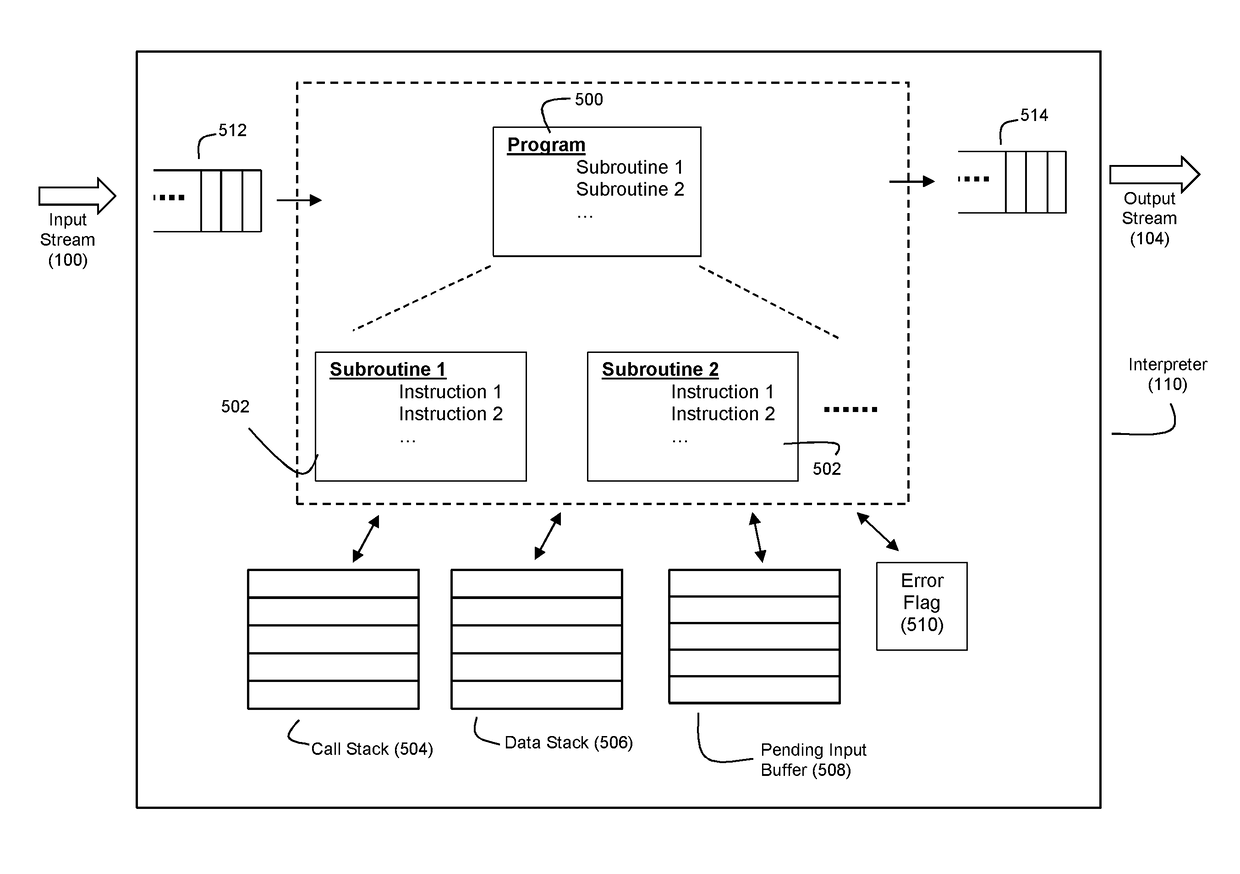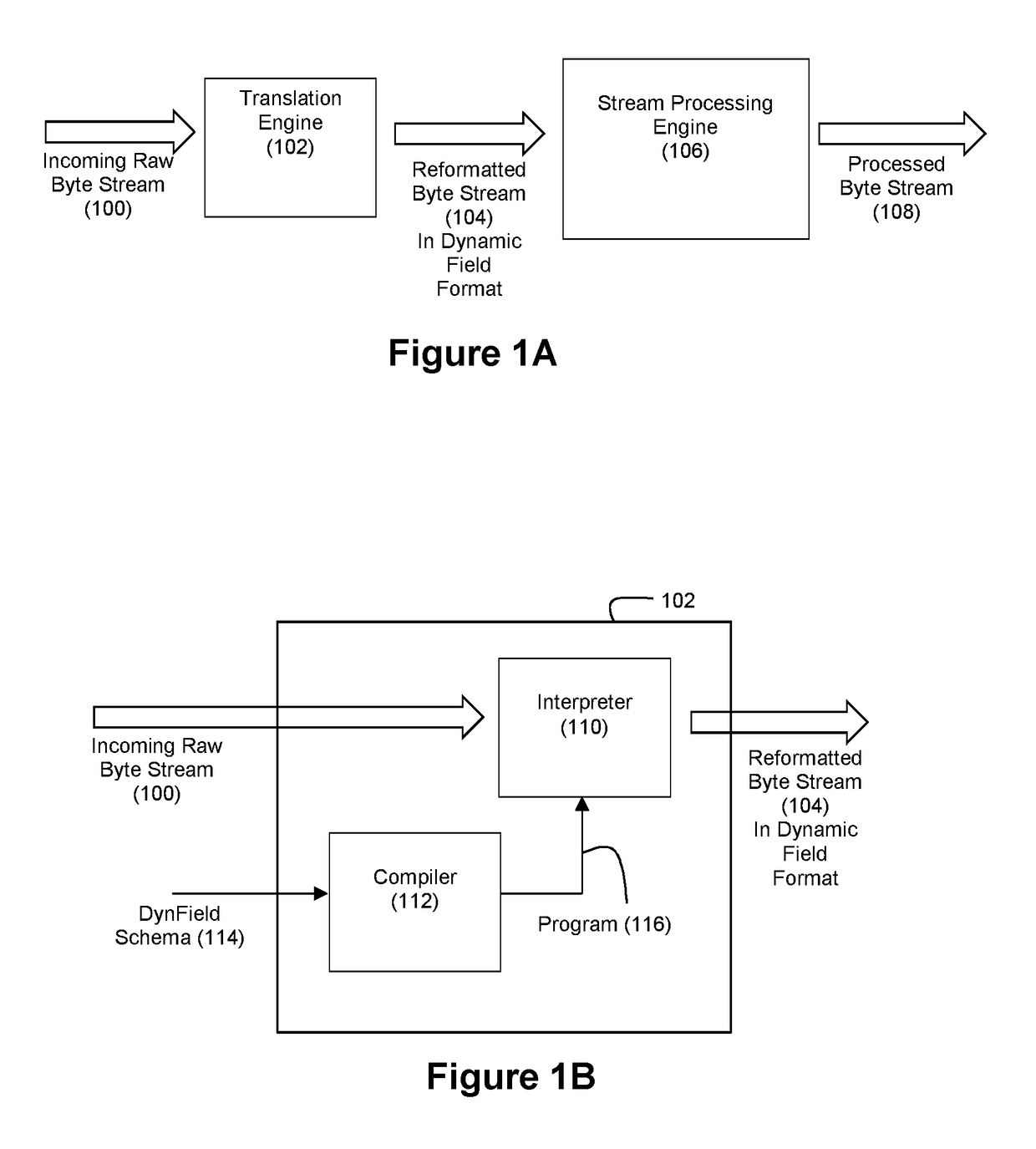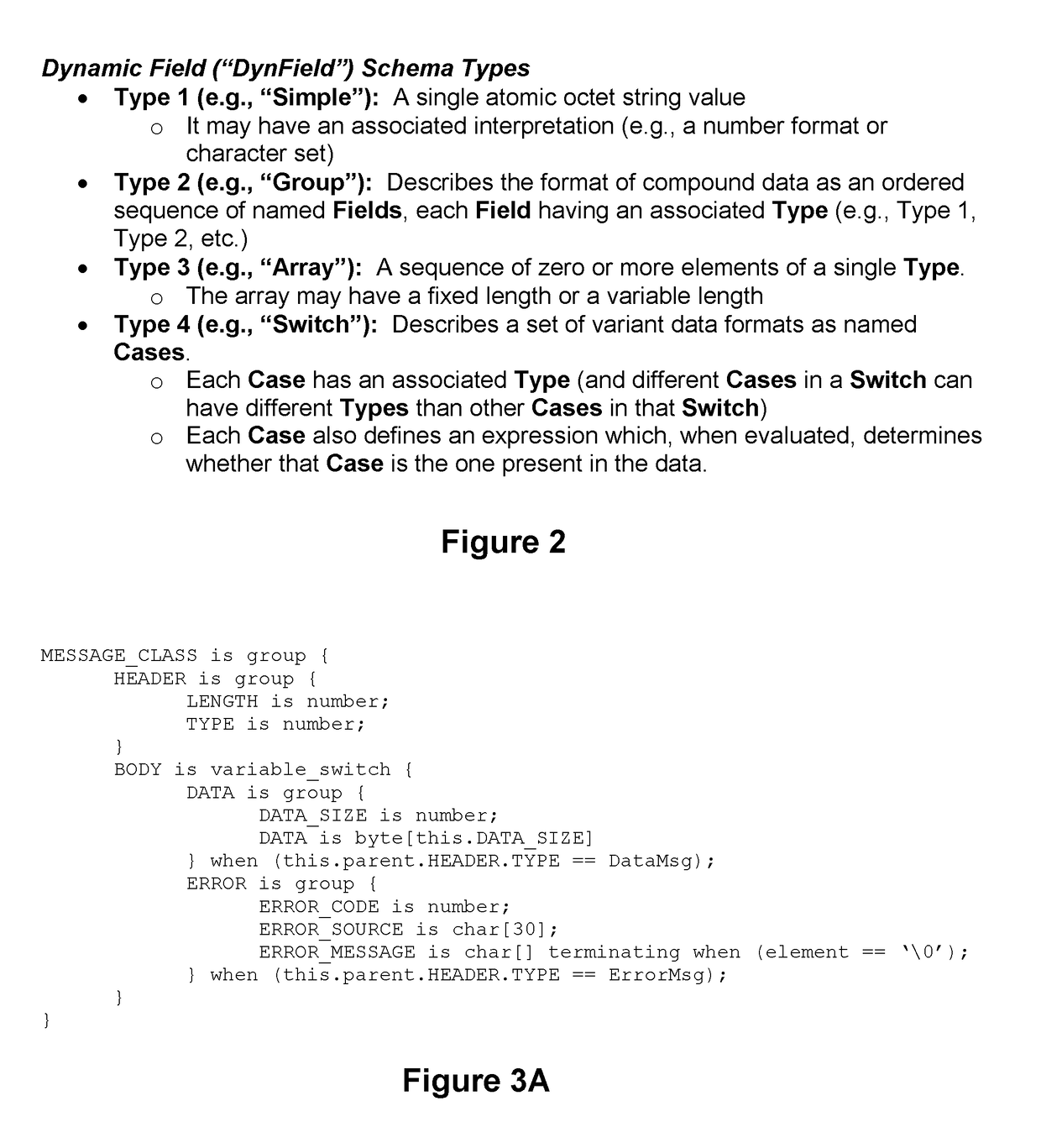Dynamic Field Data Translation to Support High Performance Stream Data Processing
a dynamic field and data technology, applied in hierarchical databases, instruments, program control, etc., can solve the problems of limited high-performance availability, increased processing time, low-latency stream data processing,
- Summary
- Abstract
- Description
- Claims
- Application Information
AI Technical Summary
Benefits of technology
Problems solved by technology
Method used
Image
Examples
Embodiment Construction
[0029]FIG. 1A shows an example system that includes a translation engine 102 feeding a downstream stream processing engine 106. The translation engine 102 ingests a raw data stream 100 and generates an outgoing reformatted data stream 104 that is in the DynField format. The stream processing engine 106 is then able to perform high performance stream data processing on stream 104, including selectively targeting desired fields of stream 104 for processing if desired, to generate a processed data stream 108. Additional details about technology that can serve as the stream data processing engine 106 are provided below and further described in U.S. patent application Ser. No. 14 / 694,580, filed Apr. 23, 2015, published as U.S. Patent Application Publication 2015 / 0310077, the entire disclosure of which is incorporated herein by reference (see, for example, data processing stages 300 and 2900 described in the '580 patent application with reference to FIGS. 4, 5, 29, 30, 35, 37, and 38 of t...
PUM
 Login to View More
Login to View More Abstract
Description
Claims
Application Information
 Login to View More
Login to View More - R&D
- Intellectual Property
- Life Sciences
- Materials
- Tech Scout
- Unparalleled Data Quality
- Higher Quality Content
- 60% Fewer Hallucinations
Browse by: Latest US Patents, China's latest patents, Technical Efficacy Thesaurus, Application Domain, Technology Topic, Popular Technical Reports.
© 2025 PatSnap. All rights reserved.Legal|Privacy policy|Modern Slavery Act Transparency Statement|Sitemap|About US| Contact US: help@patsnap.com



